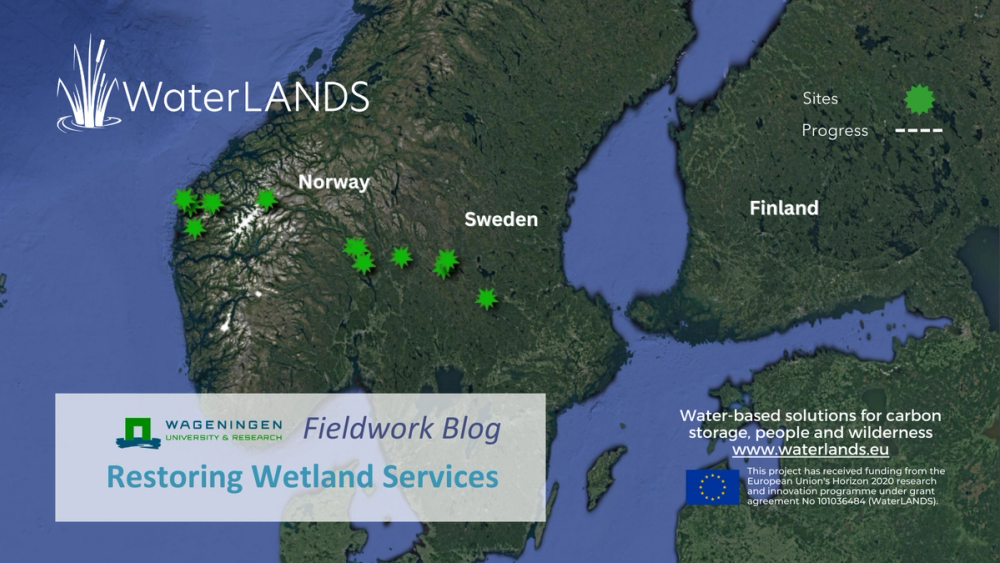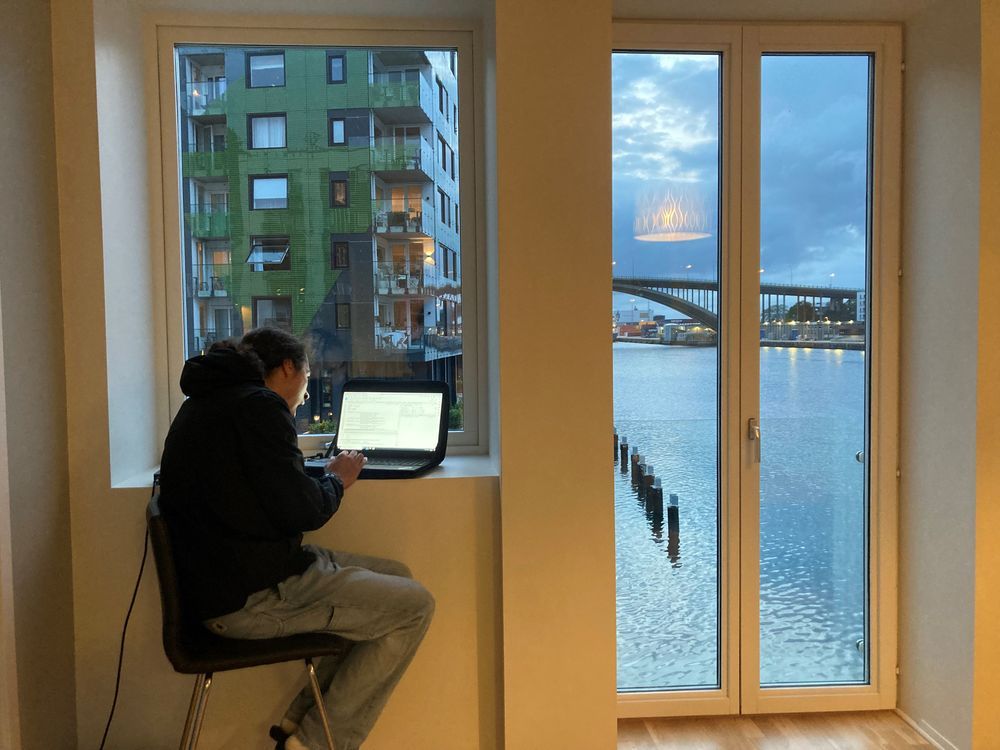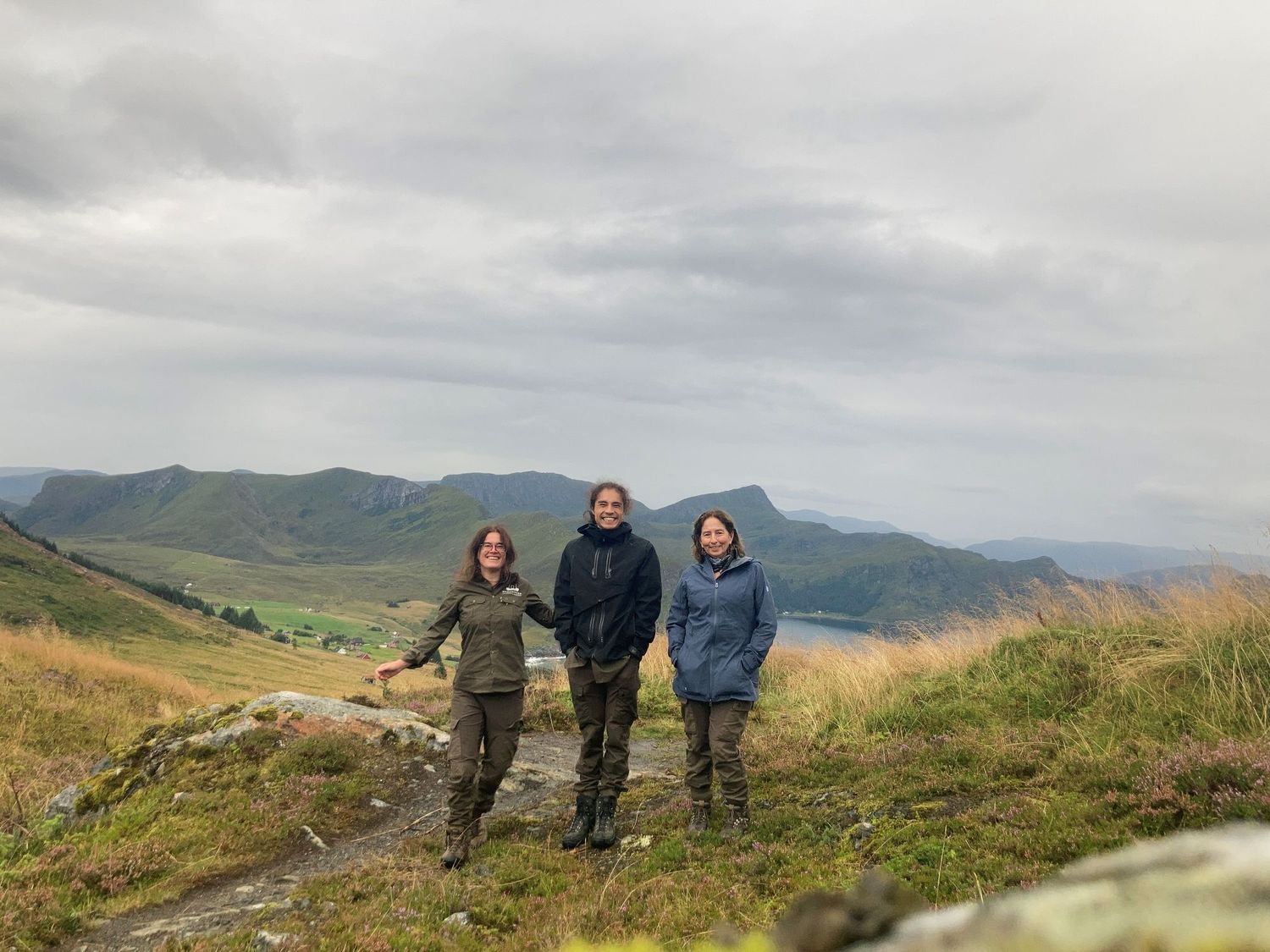Context
Work Package 1 in the WaterLANDS project relates to restoring wetland services. WP1 works to identify the best ways to manage environmental pressures that affect wetlands with the aim to reverse wetland degradation and recover important ecosystem services such as water quality and flood prevention. The team leading WP1 from Wageningen University have departed on three weeks of field work that will span three European countries. The aim of the field work is to collect drone images and take field measurements of peatlands that will help to upscale ground-based indicators to satellite images. Read the first blog of their trip below.

The Team
Milena Holmgren, Enahu Tahitu, Juul Limpens, Wageningen University
The Journey Begins
Today is the day we have worked towards for half a year: we leave for a grand peatland tour from Norway to Finland with…a camper. We travel light with most of our backpack space filled with equipment, including two drones and a high precision geo-reference system to link the surface vegetation with the images.
From Amsterdam we fly to Bergen on the west-coast of Norway, which is considered the rainiest city in Europe. Fortunately for us we managed to arrive on a dry evening with beautiful cloudscapes.
We find a place to eat that caters to the international student crowd at the University of Bergen, enjoy our walk through the university district full of stately homes and discuss the eating habit of the leopard slug (Limax maximus), which is known to supplement it’s diet with other slugs. The specimen we find in the park however does not seem hungry for a slug we place next to it. Perhaps it is satisfied already. We marvel at the foot bridge that opens up once in a while to let through the foot traffic and try to count the many small fishes that take shelter in the harbour.
Back home, work starts up. All batteries are charged and we are trying out our newest selection procedure to find peatlands that meet our criteria. We are nervous and excited. How much will our plans need to be adapted to fit the real field situation? We will find out tomorrow.

Image: PhD student Enahu Tahitu working on sampling algorithm (photo by Wageningen University)
